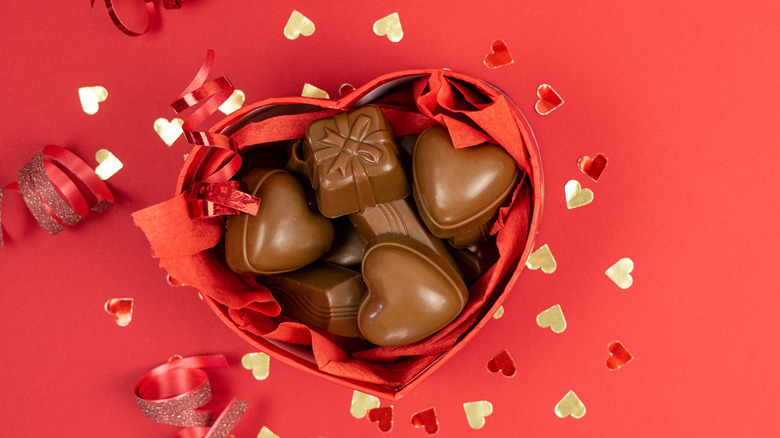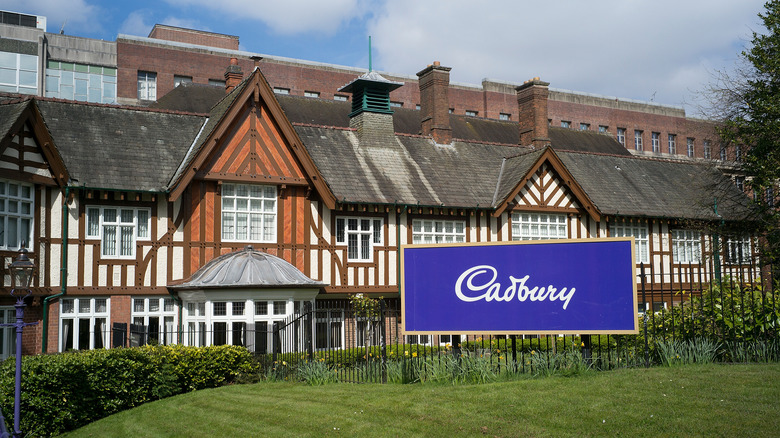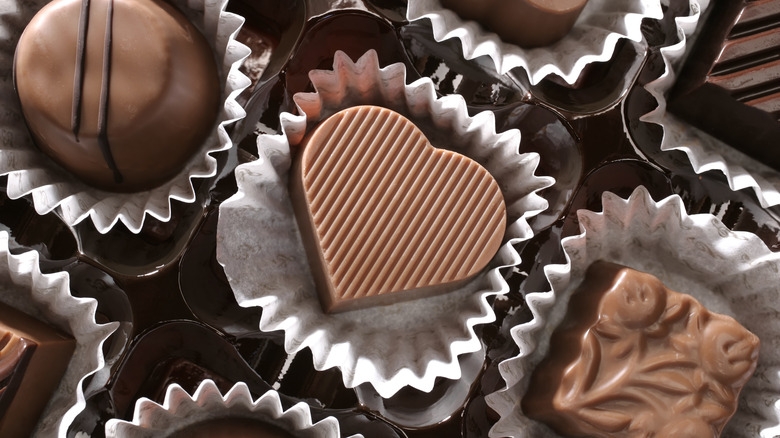How The Cadbury Brothers Accidentally Invented Valentine's Day Chocolates
Valentine's Day is synonymous with candy, and one confection in particular. You've got the classic conversation hearts, but let's be honest — they taste and feel like chalk in your mouth. The true cornerstone of Valentine's Day indulgence is chocolate. The holiday is a massive occasion for chocolate companies, with the National Confectioners Association reporting that the Valentine's season generates about $4 billion in sales each year. It's impossible to imagine Valentine's Day without heart-shaped chocolate boxes and Hershey's kisses, but how did the chocolate business come to dominate this holiday?
There is some superficial symbolism in honoring your sweetheart with sweets, but candy was the furthest thing from people's minds when Valentine's Day began. In fact, it wasn't even about love originally. There are two St. Valentines that the holiday could have been named for, but neither was known for romance. It was only in medieval times — when February 14 became associated with the mating season for birds — that Valentine's Day became a holiday. Chocolate wouldn't enter the picture for another 500 years after that.
It was in Victorian England that the modern Valentine's Day traditions really cemented themselves, thanks to a burgeoning chocolate company called Cadbury. Of course, we all know Cadbury today — it's one of the world's biggest chocolate brands and the inspiration for Roald Dahl's Willy Wonka books. Cadbury was the first company to sell chocolate in heart-shaped boxes, but oddly enough, its founders were actually opposed to Valentine's Day.
The Cadburys' religion forbade indulgence
When John Cadbury opened his first store in 1824, he had no intention of starting a chocolate empire. Cadbury was a Quaker who shunned even the slightest forms of indulgence. He was so strict in his beliefs that he would not let his family own musical instruments or use chairs with armrests. He originally sold tea, coffee, and drinking chocolate, marketing them as wholesome alternatives to alcohol. However, cocoa processing technology was limited at the time, and chocolate products tended to taste overwhelmingly bitter.
When John Cadbury retired in 1861, the company was on the verge of bankruptcy. His sons, George and Richard, took over and decided to focus solely on chocolate. They invested in a novel cocoa press and began to manufacture eating chocolate. This was a fairly new product in England at that time, so the brothers launched an aggressive marketing campaign.
To improve sales, Richard began making decorative boxes to sell the chocolates in. One of his signature designs was a heart-shaped box, but he didn't intend it as a Valentine's Day product. The brothers' Quaker beliefs would have put the holiday off the table altogether, but customers made the link to the day of love, and the heart-shaped boxes became Valentine bestsellers. George and Richard were forced to weigh their beliefs against the prospect of Valentine's Day profits. They ultimately chose what was best for business, but they did so subtly, marketing chocolate as an innocent means of indulgence.
Is there a deeper link between chocolate and love?
In trying to create appealing packaging, the Cadbury brothers stumbled into a Valentine's Day staple. Now, heart-shaped boxes of chocolate are a trademark of the holiday, but even though their association arose by mere accident, people have since drawn deeper connections between chocolate and the season of love. You might have heard that chocolate is an aphrodisiac — some companies even market it specifically as a means for arousal — but in truth, this claim is questionable.
Rumors of chocolate's lustful power are based on two specific chemicals present in cocoa. First, there's tryptophan, an amino acid that prompts the brain to release more serotonin, which is in turn linked to sexual arousal. Then, there's phenylethylamine, a stimulant akin to amphetamine, which has long been thought to play a role in romantic emotions.
However, cocoa only contains very small amounts of tryptophan and phenylethylamine. Most of these chemicals get metabolized in our digestive tracts, never even entering our bloodstreams. Studies indicate that chocolate's aphrodisiac effects are a mere myth, and that fermented foods actually cause higher levels of serotonin. Who knows? If some enterprising sauerkraut company had taken the same creative mindset as the Cadbury brothers, we might be celebrating Valentine's Day in a much different (and smellier) way.


